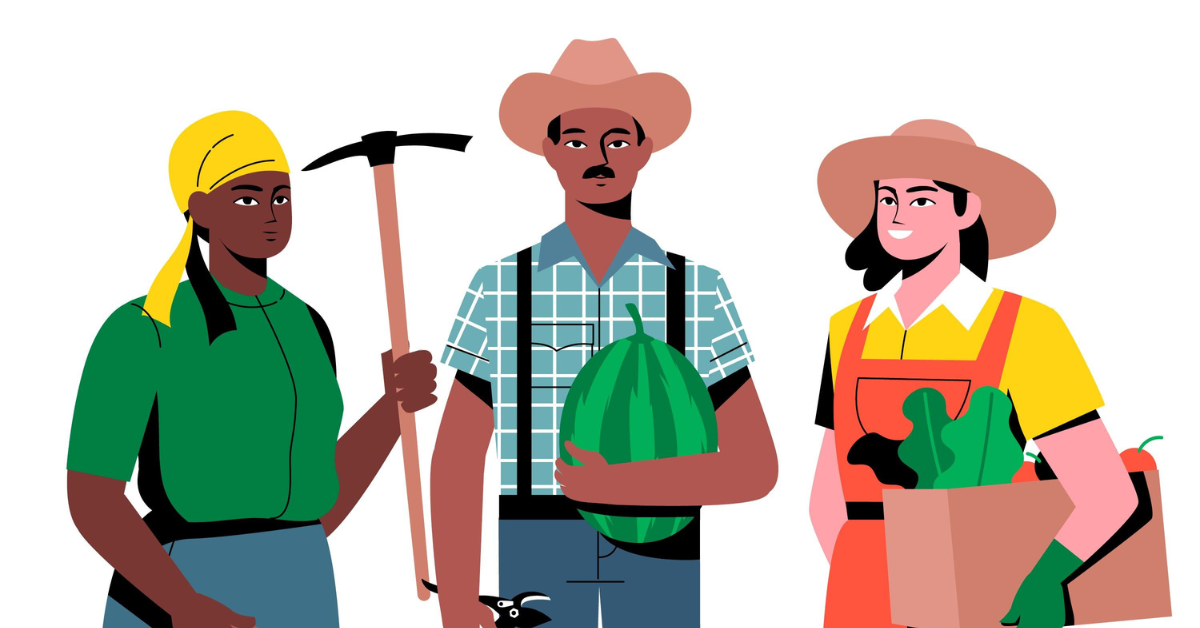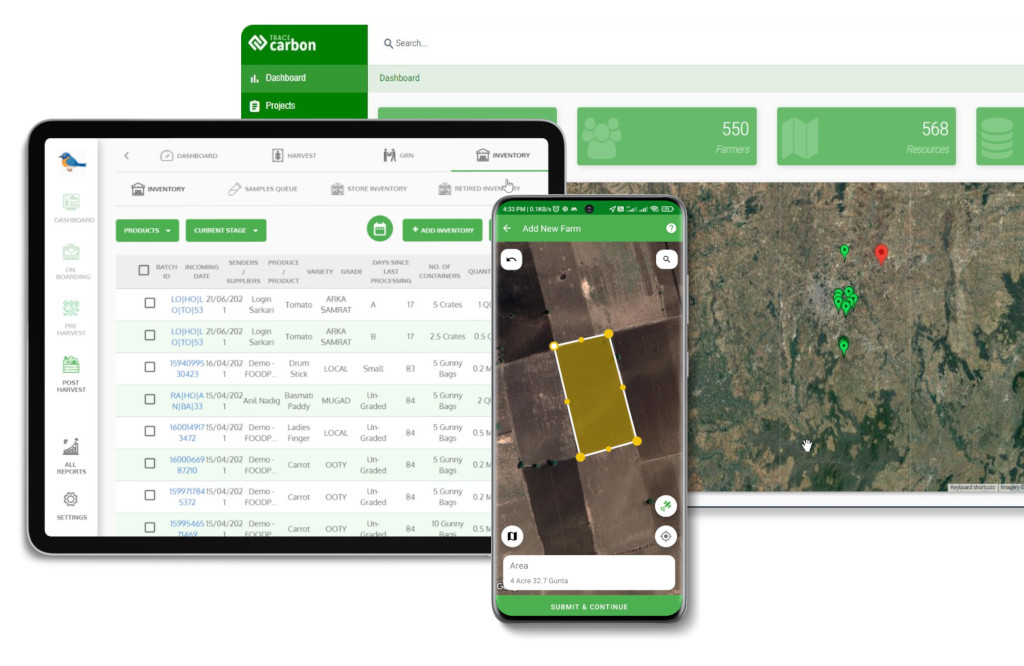Contact: +91 99725 24322 |
Menu
Menu
Quick summary: Learn how to onboard smallholder suppliers for EUDR compliance — from GPS mapping to due diligence. A step-by-step guide for sourcing teams and exporters.

They say a supply chain is only as strong as its weakest link — but in the context of EUDR, it might be more accurate to say it’s only as compliant as its most remote farm. As companies scramble to meet the EU Deforestation Regulation (EUDR) deadlines, one challenge stands out: Onboard Smallholder Suppliers for EUDR Compliance
Under the regulation, operators and traders must prove that their products are deforestation-free, traceable to the plot level, and backed by thorough due diligence — regardless of whether the supplier is a global exporter or a one-acre farmer deep in rural Africa, Asia, or Latin America. And that’s where it gets tricky. Smallholder farmers, who form the backbone of many global agri-supply chains (think cocoa, coffee, rubber, and palm), often lack the tools, documentation, or digital access required for compliance. Without a clear onboarding strategy, companies risk non-compliance, supply disruptions, and even loss of EU market access.
So how do you onboard thousands of smallholders — quickly, accurately, and at scale — without compromising trust or traceability?
Key Takeaways
Onboarding smallholder farmers for EUDR compliance sounds simple in theory: collect geolocation data, verify sourcing, store documents, done. But when you’re dealing with hundreds or thousands of smallholders across remote regions — the reality hits hard.
Let’s unpack why this is one of the most underestimated roadblocks to EUDR readiness.
Most smallholder supply chains still run on paper. Sourcing info lives in logbooks, WhatsApp messages, or local middlemen’s memory. There’s no central record, no digital footprint — and often, no easy way to capture one.
Their goal: Operators and traders want a clean, centralized record of all their upstream suppliers.
Their intent: “How do I digitize my smallholder network without disrupting them?”
EUDR requires plot-level traceability. But smallholders often don’t have GPS-mapped boundaries, title deeds, or even formal farm names. Many share or lease land informally — which creates a compliance grey zone.
The compliance lead’s worry: “How do I prove deforestation-free sourcing if my suppliers don’t even have maps?”
Many smallholders operate in low-connectivity zones. Some may not read or write in the official language. Expecting them to fill forms, scan documents, or log into portals? It’s unrealistic.
Their goal: Companies want supplier data that’s compliant — and accurate.
Their intention: “How do I onboard smallholders without overwhelming or alienating them?”
Let’s not forget the human side. Smallholders often don’t trust the people asking for their data. They’ve seen too many projects where data is collected and nothing comes back. So when a buyer asks for plot data and declarations? The response is often hesitation — or resistance.
The buyer’s goal: Build a transparent, traceable, and ethical supply chain.
Their hidden intent: “How do I build trust with smallholders during compliance onboarding?”
Smallholder onboarding isn’t just a logistics problem — it’s a relationship challenge. To comply with EUDR, companies must stop treating farmers like boxes to be ticked and start viewing them as long-term partners in sustainable sourcing.
If your solution makes onboarding simple, inclusive, and scalable, you won’t just meet EUDR requirements — you’ll unlock long-term supply chain resilience.
EUDR compliance isn’t just a box to check — it’s a system-wide shift that starts at the farm gate. While the regulation may sound legal-heavy and distant, its impact lands directly in the fields of the world’s most essential — and vulnerable — producers: smallholder farmers.
So, what exactly does the EU Deforestation Regulation demand? And more importantly, why does it matter so much for the smallholders at the base of your supply chain?

What EUDR requires: You must prove that every product imported into the EU — whether it’s coffee, cocoa, rubber, or wood — comes from land not linked to deforestation, by tracing it back to a specific plot.
Why this matters for smallholders: Most smallholders don’t have formal plot maps or land records. If their farms aren’t geo-tagged, you can’t prove compliance — which means the product might not be eligible for export.
What EUDR requires: You need to verify that no deforestation has occurred on the sourcing plot after December 31, 2020 — and be ready to defend that proof in audits.
Why this matters for smallholders: Smallholder regions are often located near forest zones. Even if a farmer’s land is clean, lack of documentation can put them at risk. Without digital records or satellite verification, there’s no way to prove they’re in the clear.
What EUDR requires: You must submit due diligence statements in the EU’s Information System before the product enters the EU market — including supplier info, plot location, and supporting documents.
Why this matters for smallholders: Any missing, delayed, or inconsistent documentation can stall an entire shipment. And smallholders are the most likely to fall through the cracks — unless there’s a structured way to support them.
What EUDR implies (but doesn’t explicitly state): If you don’t engage your suppliers — especially smallholders — early and meaningfully, compliance becomes near-impossible.
Why this matters: You can’t enforce EUDR from a spreadsheet. It takes human connection — training, support, clear incentives, and tech that meets farmers where they are.
This regulation pushes us toward something we should’ve been doing all along: treating smallholder farmers as strategic partners, not just anonymous suppliers.
Yes, EUDR demands traceability and documentation. But more than that, it demands transparency, equity, and inclusion. The companies that succeed won’t be the ones that scramble to comply — they’ll be the ones that turn compliance into collaboration.
You’ve got your EUDR obligations on paper. Now comes the hard part: making it work on the ground — across hundreds (or thousands) of smallholder suppliers who are crucial to your supply chain, but far removed from regulations, GPS tools, or due diligence language.
The goal? Build a compliant, inclusive, and traceable supply base that won’t break your workflows — or your farmers’ trust.
Here’s a proven, field-tested approach to get you there:
Before you collect data or deploy tools, you need to know who you’re working with.
Segmentation helps you prioritize onboarding efforts, allocate resources smartly, and identify high-risk pockets early.
Know about Country Benchmarking
Create supplier clusters by geography, crop, and compliance readiness — then build onboarding journeys for each.
Most smallholders don’t have desktops or digital documentation — but they (or their field agents) do have mobile phones.
Equip your teams with field-friendly apps or offer assisted data capture via extension agents or co-op leaders.
You reduce friction, reach more farmers faster, and gather cleaner, real-time data.
Choose tools that work offline and sync when online. Field agents should be able to collect data in local languages and upload images, land papers, or voice notes.
No Network? No Problem. See How Offline Tech Is Changing the Game
What if your farm data stayed synced — even without internet? Discover how our offline-first solution helped boost traceability, and compliance where connectivity was a challenge.
Read the full case study to see how offline mapping and data sync powered smarter decisions, anywhere.
EUDR compliance hinges on one thing: proof of where your commodity was grown.
Every farm must be linked to plot-level geolocation (GPS coordinates), and ideally, mapped with field boundaries and land-use status.
Without geo-data, you can’t verify whether the source is deforestation-free — and the shipment becomes non-compliant.
Use assisted digital mapping with satellite overlays or GPS-enabled apps. Where farmers can’t self-report, work with local agri-cooperatives or NGOs for plot validation.
Mapping More Than Farms — Mapping a Future Without Deforestation
How does a leading cocoa exporter in Nigeria stay ahead of compliance and build buyer trust? By putting traceability on the map — literally. With TraceX’s farm mapping and Restricted Zone feature, they ensured every bean met deforestation-free standards.
Dive into the case study
EUDR isn’t designed with farmers in mind. Many smallholders don’t know what “deforestation-free sourcing” means, let alone how to comply.
Training is your bridge. But it has to be simple, localized, and trust-building.
If farmers don’t understand the “why,” they won’t engage with the “how.”
Collecting supplier data is only half the job — organizing and securing it is the other half.
Every declaration, GPS coordinate, and land-use document must be digitally accessible and linked to supplier IDs. Bonus if it’s searchable and auditable on demand.
Missing or unverified records can stall shipments, delay audits, or trigger penalties.
Use a compliance dashboard or farm management platform that links each supplier to their traceability and due diligence profile — updated in real time.
EUDR compliance isn’t a one-time task — it’s a living process.
Land use can change. Suppliers might shift sourcing plots. You need a system that lets you monitor, flag, and refresh supplier data periodically.
Staying audit-ready means catching issues before they become shipment blockers.
Automate risk alerts based on location, land-use trends, or compliance history. This helps you focus field visits where they’re needed most.
How are we supposed to onboard hundreds of smallholder suppliers, across remote regions, and still meet EUDR deadlines?
Manual processes? Not scalable. Excel sheets? Too error-prone. Field agents with clipboards? Good luck managing that at scale.
If you’re nodding along, you’re not alone.
What you need is a digitally enabled, human-first workflow — one that brings traceability, geolocation, and due diligence together in a way that’s both field-friendly and audit-ready.
Let’s walk through the digital tools that are already solving this challenge — and how they can fit into your EUDR compliance journey.
What they do: Empower your team (or partner orgs) to capture farm data — names, crops, documents, GPS — on the go, even in offline mode.
Why it works:
What it does: Use GPS and satellite overlays to verify land-use, identify plot boundaries, and monitor changes over time.
Why it’s powerful:

What they do: Give suppliers (or their reps) a login to upload documents, declarations, and GPS data — all on their own time.
Why it works:
What they do: Centralize all supplier data and show who’s compliant, who’s pending, and where you’re at risk.
Why it’s critical:
What it does: Sync your onboarding data into your existing supply chain systems — no silos, no double entry.
Why it matters:
The companies that will thrive under EUDR aren’t just compliant — they’re digitally equipped. When your onboarding system is smart, scalable, and supplier-friendly, compliance becomes the byproduct of doing things right — not a mad scramble to stay afloat.
TraceX is a purpose-built, end-to-end digital platform designed to help agribusinesses, exporters, cooperatives, and sourcing organizations comply with the EU Deforestation Regulation (EUDR) — especially when working with smallholder-driven supply chains.
Key Capabilities
Who It’s For:
EUDR compliance isn’t just about ticking boxes — it’s about building supply chains that are traceable, transparent, and inclusive. When smallholder farmers are equipped with the right tools, training, and support, they become powerful partners in sustainable sourcing. By taking a step-by-step approach to onboarding, backed by digital tools and a human-first mindset, companies can not only meet regulatory requirements — but lead the way in responsible trade.
Whether you’re just starting or scaling your onboarding efforts, remember: real compliance begins where the crops are grown. Start at the source, and the rest will follow.
Typically, you’ll need geolocation (GPS coordinates), land-use history, and a supplier declaration confirming deforestation-free sourcing.
Yes. Many companies use field agents, cooperatives, or assisted onboarding via mobile apps to collect and digitize the required data.
Using digital dashboards with real-time tracking, risk scores, and automated alerts helps monitor thousands of suppliers efficiently and audit-ready.
